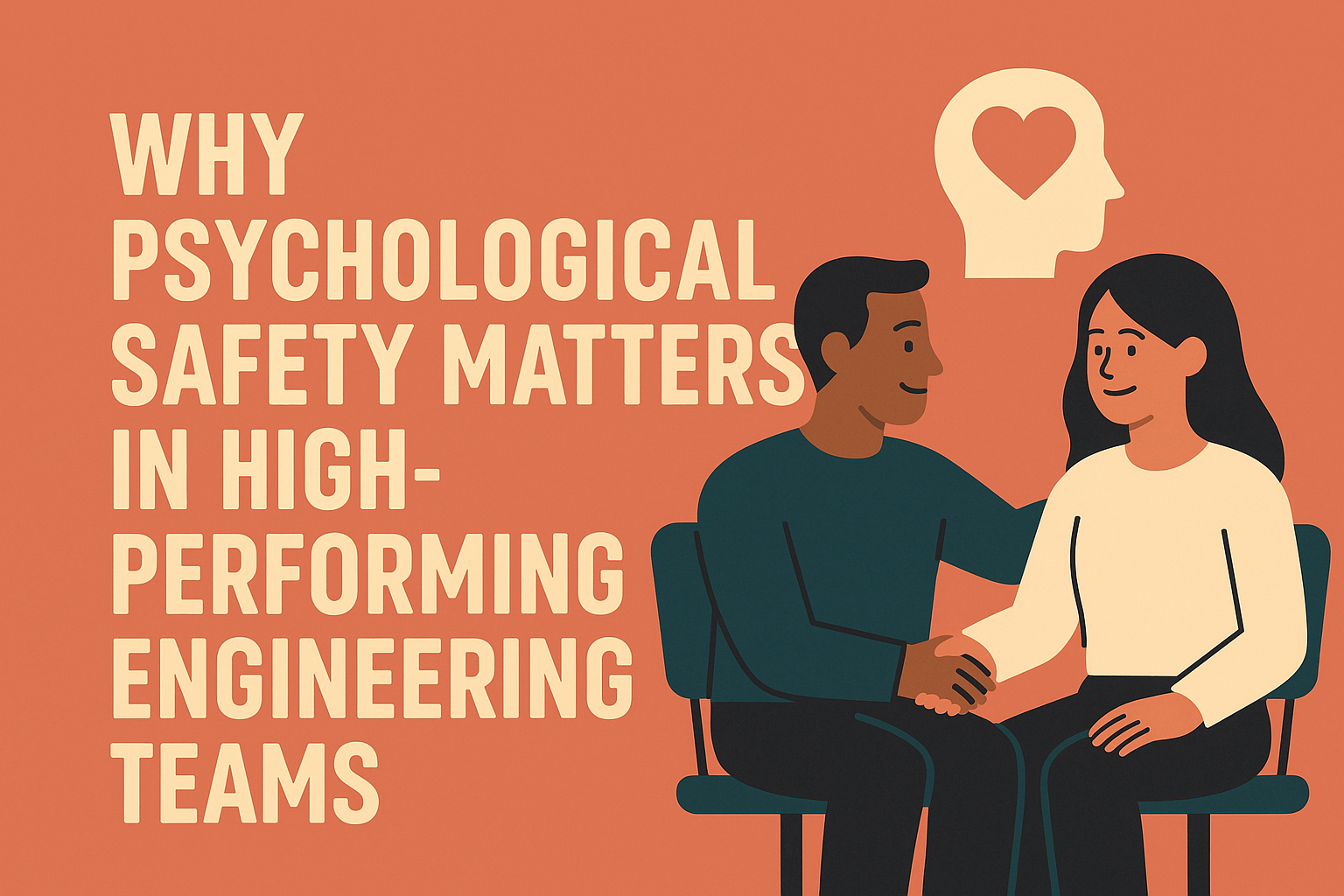Why Psychological Safety Matters in High-Performing Engineering Teams

In the world of digital engineering, we often fixate on the technical ingredients of success - architecture choices, automation pipelines, agile methodologies, and tooling stacks. These are essential, no doubt. But beneath all of that lies a far more fundamental enabler of performance: psychological safety.
It’s the invisible force that separates truly high-performing teams from the rest. Without it, even the most talented engineers will hold back. With it, they’ll take risks, share ideas, admit mistakes, and push the boundaries of what’s possible.
If we care about innovation, continuous improvement, and delivering at pace with quality - we need to care, deeply, about psychological safety.
What is Psychological Safety?
Psychological safety is the shared belief that it’s safe to speak up, ask questions, challenge decisions, and admit mistakes without fear of embarrassment, punishment, or dismissal. Coined by Harvard professor Amy Edmondson and later popularised through Google’s Project Aristotle, it emerged as the number one trait of effective teams - outperforming factors like technical skill and even workload.
In engineering teams, this means developers feel safe to say:
“I’m not sure how this works - can someone walk me through it?”
“I think there’s a better way to solve this problem.”
“I made a mistake in production.”
“This design decision might introduce risk down the line.”
These moments are not signs of weakness - they’re signals of strength. They create learning loops, surface issues early, and drive better decisions.
Why It Matters in Engineering
Engineering is inherently uncertain. We’re solving complex problems, under time pressure, in changing environments. Mistakes will happen. Designs will evolve. Code will break. The teams that succeed are those that can adapt, learn, and respond quickly - and that requires trust.
Here’s how psychological safety directly drives performance:
Faster Problem Solving: When engineers feel safe to admit what they don’t know, problems get solved faster. Silence slows teams down. Collaboration speeds them up.
Better Design Decisions: Safe teams challenge assumptions and pressure-test each other’s thinking. This leads to more robust, resilient solutions - built from diversity of thought, not deference to hierarchy.
Higher Quality Code: Engineers who feel safe to raise quality concerns, push back on timelines, or flag tech debt are the ones protecting the integrity of the system.
Resilience Under Pressure: During incidents, blamelessness matters. Teams that know they won’t be punished for failure focus on resolution and learning - not self-preservation.
Increased Engagement and Retention: People want to work where they feel heard, respected, and trusted. Teams with psychological safety have higher morale and lower attrition.
The Engineering Anti-Patterns to Watch For
Despite its importance, psychological safety can be fragile - and engineering cultures can unintentionally erode it. Here are some red flags:
Punitive postmortems: Blame-heavy incident reviews discourage openness.
Hero culture: Elevating individuals who "save the day" over those who quietly build resilience.
Overloaded backlogs with no team input: Creates a sense of disempowerment.
Dismissive feedback in code reviews: Erodes confidence and willingness to engage.
Fear of raising red flags: When engineers quietly work around problems instead of surfacing them.
High-performing teams don't eliminate these pressures - they actively counter them through leadership, culture, and practice.
Engineering Leaders: What You Can Do
Creating psychological safety isn't soft work - it’s strategic leadership. Here’s how to start embedding it in your engineering teams:
Model Vulnerability
Share your own mistakes. Ask for help. Say “I don’t know.” This signals that it’s safe for others to do the same.Create Inclusive Rituals
Use retrospectives, stand-ups, and planning sessions to invite diverse voices - not just the loudest ones. Ensure everyone has a way to contribute, especially introverts or junior team members.Focus on Learning, Not Blame
Make post-incident reviews blameless and forward-looking. Celebrate learning, not just fixing.Recognise Courage
Acknowledge when someone speaks up, asks a tough question, or challenges a decision. Public reinforcement builds a culture of openness.Make Feedback Safe and Normal
Normalise respectful challenge - during code reviews, design discussions, and team decisions. Focus on ideas, not individuals.Measure It
Use anonymous team health checks or engagement surveys. Ask directly: “Do you feel safe to speak up? To fail? To challenge?” The answers may surprise you - and guide where to act.
The Strategic Imperative
Psychological safety is not a nice-to-have. It’s not about being overly nice, or avoiding hard conversations. It’s about creating the conditions for performance - conditions where engineers can think critically, act boldly, and learn rapidly.
In high-trust environments, speed doesn’t mean recklessness. It means fewer delays due to silence, indecision, or rework. It means more autonomy, higher morale, and better outcomes.
As engineering leaders, our job isn’t just to build systems - it’s to build the conditions where people can do their best work. Psychological safety is the foundation. Let’s treat it as such.
Because in the end, it’s not just the code that matters - it’s the culture we build around it.
Engineering leader blending strategy, culture, and craft to build high-performing teams and future-ready platforms. I drive transformation through autonomy, continuous improvement, and data-driven excellence - creating environments where people thrive, innovation flourishes, and outcomes matter. Passionate about empowering others and reshaping engineering for impact at scale. Let’s build better, together.
